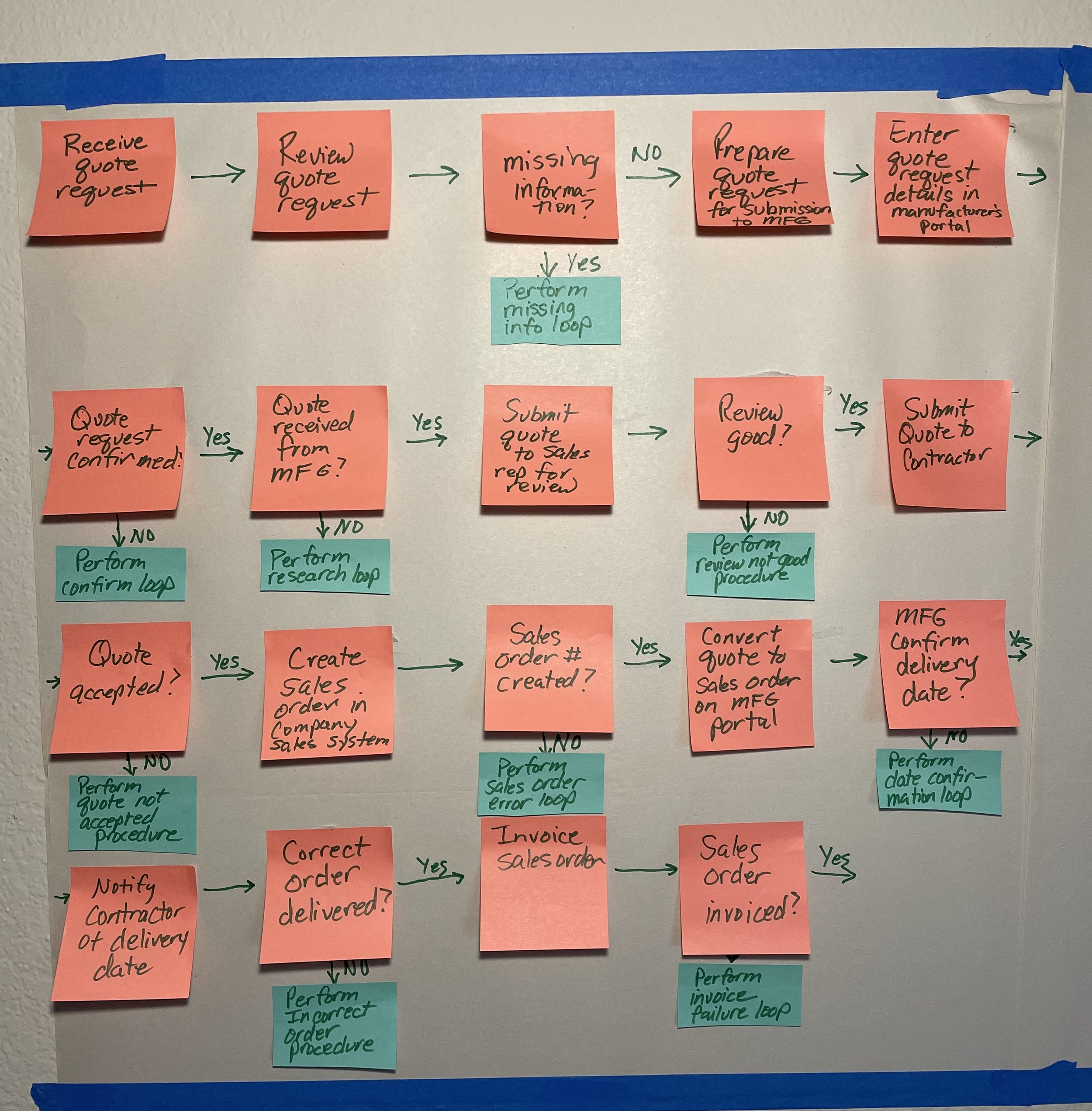Workflow mapping as a creative process
Paper. Post-its. Pens. These tools are all you need to jumpstart the creative process of mapping a workflow. They’re old-school simple, set an expectation of play, and allow participants to be physically engaged in both memorializing and solving the puzzle of their workflow.
Scenario: You own a lighting supply company with a contractor customer base. To request a quote or order, a contractor contacts a Sales Rep who, in turn, submits the request to the order department. In the order department, Specialists process each request - from quote to construction site delivery - in a complex workflow with multiple possible points of failure. Since the workflow has never been documented, each Specialist performs a unique version of the workflow, which frequently results in inconsistencies, mistakes, and mistrust. There are no standard operating procedures, and new hires who can adapt to the chaos learn by osmosis over the course of a year (at minimum).
To map the workflow:
Start by assuming that no one Specialist has ‘the right’ workflow; consider that the best practice lies somewhere in the combination of all the practices.
Set the expectation that the objective of the mapping is to discover and establish the best practice for the team.
Ensure each Specialist has up to 3 hours reserved in a conference room for an uninterrupted creative session with a facilitator who can guide the participant away from rabbit holes.
Avoid having more than one Specialist in a creative session. A peer with an unchecked ego can, and will, attempt to invalidate another person’s practice.
Reserve a conference room with a large expanse of wall onto which multiple sheets of large paper can be adhered.
Obtain enough - large sheets of sticky paper (such as 3M) for all Specialists to create their own memorialized workflow - markers (such as Sharpies) of various colors - and sticky notes (such as Post-its) of various colors.
After each workflow is created, the workflows are combined into a master draft, and reviewed as a team. Each step is rationalized using best-practice thinking, rather than beloved-practice thinking. The workflow is then transcribed to a workflow diagram tool (such as Visio), and tested by the team before implementing. Once the workflow is mapped, and all procedures are identified, Standard Operating Procedures can be created.
You don’t have to spend a lot of money up front to obtain insight into a workflow. In the images below, I used a large sheet of packing paper attached to the wall with painter’s tape to map a hypothetical sales/quote order workflow.
Get the pieces of the workflow puzzle down first. Beginning at the top of the paper, and working left to right, the participant writes one step or decision on a sticky note and positions it on the paper in sequential order. A facilitator is necessary to help guide the participant from disappearing down procedure rabbit holes.
Next, add the puzzle connectors. Use arrows to indicate direction of the workflow. Use sticky notes of a different color to indicate a separate loop or procedure.
Operational excellence begins with clarity on workflows and procedures.
This blog was written and edited by a human!
© 2024 Lori K. Barbeau

